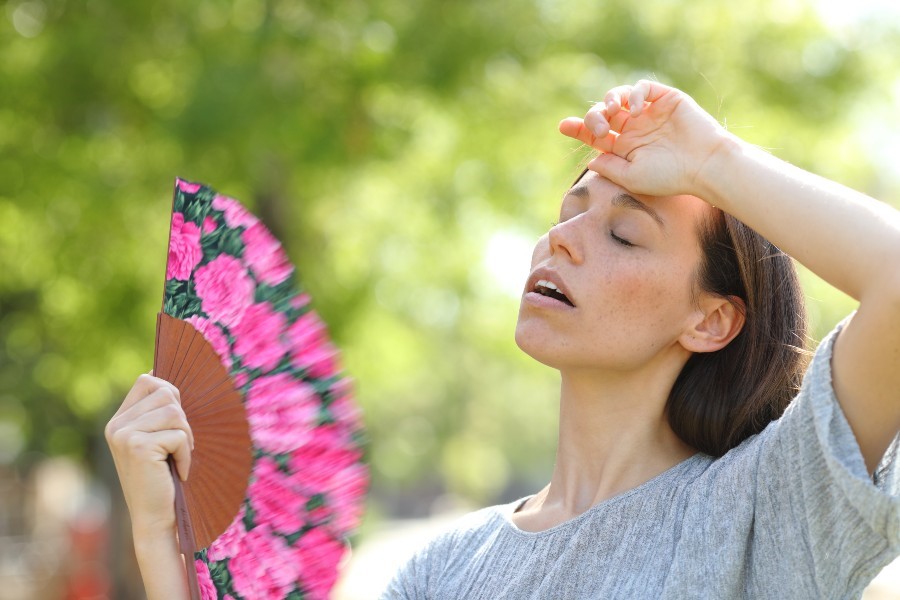
Symptoms of heat-related illnesses: First Aid Actions
Living and vacationing in climates with high heat and humidity make us vulnerable to heat-related illnesses. Heat exhaustion is a precursor to heatstroke
Both are potentially life-threatening and require immediate medical care.
Heat exhaustion is a heat-related illness that can occur after you’ve been exposed to high temperatures, and it is often accompanied by dehydration
There are two types of heat exhaustion:
- Water depletion. Signs include excessive thirst, weakness, headache, and loss of consciousness.
- Salt depletion. Signs include nausea and vomiting, muscle cramps, and dizziness. (Felson 2018)
What to Do If You Suspect Heat-Related Illness
Children and the elderly are particularly vulnerable to heat-related illness.
Some of the simple precautions we can take are wearing sunscreen, wearing hats and lightweight clothes, staying in the shade, and the most important of them all is to drink plenty of fluids and stay hydrated.
Limiting your exposure to the sun is particularly important.
Strenuous exercise should be limited once heat alerts have been issued to prevent heat stroke, heat exhaustion, or heat cramps.
Heat exhaustion is one part of the spectrum of heat-related illnesses that begin with heat cramps, progressing to heat exhaustion, and finally to heat stroke. (Wedro 2019)
Heat Exhaustion vs Heat Stroke (Sun Stroke)
Knowing the difference between heat exhaustion and heat stroke is important to knowing if immediate emergency medical intervention is necessary.
Heat Exhaustion:
Causes of heat exhaustion may include exposure to high temperatures, particularly when it is combined with high humidity and strenuous physical activity. Without prompt treatment, heat exhaustion can lead to heatstroke, which is a life-threatening condition.
Fortunately, heat exhaustion is preventable.
Symptoms:
Cool, moist skin with goose bumps when in the heat, heavy sweating, faintness, dizziness, fatigue, weak, rapid pulse, low blood pressure upon standing, muscle cramps, nausea, headache
What to do:
Move to a cool place, loosen your clothes, put cool, wet clothes on your body, or take a cool bath, sip water.
Get medical help right away if you are throwing up, your symptoms get worse, your symptoms last longer than 1 hour. (Felson 2020)
Heatstroke:
Heat stroke can kill or cause damage to the brain and other internal organs.
Although heat stroke mainly affects people over age 50, it also takes a toll on healthy young athletes.
Heatstroke is caused by the failure of the thermostat in the brain which regulates the body temperature.
Due to prolonged exposure to heat, the body becomes overheated.
Heatstroke can cause unconsciousness within minutes of feeling unwell.
Symptoms:
High body temperature (103°F or higher), hot, red, dry, or damp skin, fast, strong pulse, headache, dizziness, nausea, confusion, or losing consciousness (passing out).
What to do:
Call 911 right away. Heat stroke is a medical emergency.
Move the person to a cooler place and help lower the person’s temperature with cool cloths or a cool bath.
Do not give the person anything to drink. (DerSarkissian 2018)
References
Felson, Sabrina. “Heat Exhaustion: Symptoms, Causes, Treatment, Prevention.” WebMD, WebMD, 15 Dec. 2018, www.webmd.com/fitness-exercise/heat-exhaustion.
Wedro, Benjamin. “Heat Exhaustion vs. Heat Stroke: Symptoms, Signs, Treatment.” MedicineNet, MedicineNet, 18 Oct. 2019, https://www.medicinenet.com/heat_exhaustion/article.htm.
DerSarkissian, Carol. “Heat Stroke (Sunstroke): Signs, Symptoms, First Aid, and Treatment.” WebMD, WebMD, 25 Nov. 2018, https://www.webmd.com/a-to-z-guides/heat-stroke-symptoms-and-treatment.
Read Also
Emergency Live Even More…Live: Download The New Free App Of Your Newspaper For IOS And Android
Heat Emergency: First Aid In Heat-Related Illnesses
First Aid For Dehydration: Knowing How To Respond To A Situation Not Necessarily Related To The Heat
Children At Risk Of Heat-Related Illnesses In Hot Weather: Here’s What To Do
Diabetes In Summer: Tips For Safe Holidays
Heat And Diabetes: Here Is The Decalogue For A Safe Summer
Anxiety, Unease And Anger: Why Can They Increase In The Summer Heat?
Venous Thrombosis: From Symptoms To New Drugs
COVID-19, The Mechanism Of Arterial Thrombus Formation Discovered: The Study
The Incidence Of Deep Vein Thrombosis (DVT) In Patients With MIDLINE
Deep Vein Thrombosis Of The Upper Limbs: How To Deal With A Patient With Paget-Schroetter Syndrome
Knowing Thrombosis To Intervene On The Blood Clot
Venous Thrombosis: What It Is, How To Treat It And How To Prevent It
Pulmonary Thromboembolism And Deep Vein Thrombosis: Symptoms And Signs


